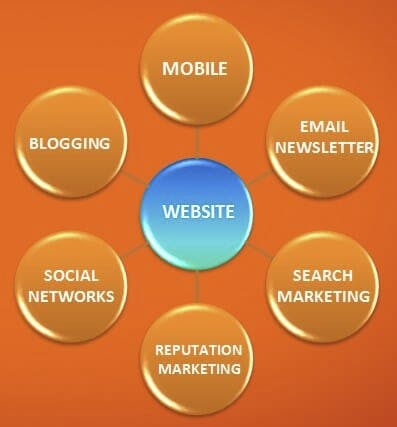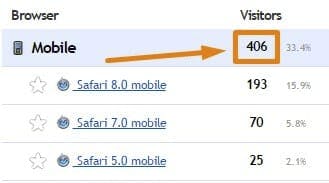 The Internet has had a profound effect on the way that people communicate and interact with each other. The changes have also had a dramatic influence on the business world by altering the way that consumers make purchases and seek out services.
The Internet has had a profound effect on the way that people communicate and interact with each other. The changes have also had a dramatic influence on the business world by altering the way that consumers make purchases and seek out services.
Until about ten years ago, companies reached out to consumers through trade shows, print advertising and other traditional marketing methods.
Times have changed significantly since then. Today, people start their shopping experience by looking on the Internet. In most cases they will visit a search engine, most likely Google, and begin to do their product research from there.
Your patients, both current and prospective, are no different. If they’re looking for physical therapy in their local region, they will expect to find you in the search engines and on the Internet.
This is very exciting and creates the opportunity for your private practice to use the Internet to your advantage and reach out to a wide range of patients in your local area.
[note_box]In order to have the competitive edge and to ensure that other physical therapy practices don’t steal potential patients, search engine optimization (SEO) is now more important than ever. It is not an exaggeration to say that businesses that don’t practice SEO are in a dangerous situation compared to other local businesses investing in search engine marketing.[/note_box]
What is SEO?
This is the bit when we talk to small practice owners that we see their eyes glaze over and they try to stifle a yawn. But bear with us, as search engine optimization (SEO) is very important and could literally save and transform your practice.
Simply put…
- SEO is helping the search engine find you.
- SEO is making your website more visible and transparent to the search engines. The most important goal of SEO should be connecting your site to the search engine.
- SEO is helping people find you in the search engine.
Social media has made everything on the Internet more personal. People don’t want to look hard for your site. People don’t want to do hours and hours of research in order to find information. They want it quick, 1-2-3 boom! SEO makes it possible by making your site more direct and focused on certain keywords that people would most likely go looking for when they want information provided by your site.
That is the point of SEO and that is why your practice needs it.
The benefits of SEO for your practice
The Internet has provided a level playing field for businesses no matter what the size. Small companies can have a viable online presence just as much as the large corporations, but just like in the offline world, the competition is huge and you need to have the competitive edge in order to get a good share of the market.
Search engines are there to help you. They serve millions of users every day looking for answers and solutions to their problems. If you have a website or online store, SEO will help your practice grow.
Search engine optimization is essential because:
- The majority of search engine users are much more likely to choose one of the top five suggestions at the top of the results page. They are unlikely to continue past page 1 or trawl their way through hundreds of search results. This means that if you want potential patients to find you, click on the link and visit your site, you need to rank as high up the search engine page as possible.
- SEO is not just about being ranked in the search engines. It also improves the user experience and usability of your site, making the viewing experience much more enjoyable for them so that they view you in a good light and will strongly consider coming to you for treatment.
- Users place a great deal of trust in the search engines and it gives them confidence and helps build up trust in your practice if they see you occupying the top results.
- SEO is perfect for the social promotion of your website. People who find your site by searching in the search engines are much more likely to promote it on Facebook, Twitter, Google+ and other social media channels.
- SEO puts you way ahead of your competition. If two physical therapy websites offer the same services, the search engine-optimized site is much more likely to attract more patients and increase business.
As you can see, small practices have a lot to benefit from SEO. It can literally transform your site into a sales marketing machine. Let’s explore the benefits in a bit more detail.
SEO forces you to create a better and more user-friendly website (more business for you)
Implementing SEO strategies will help you to create a better, faster and much more user-friendly site for your patients.
How, you may ask? Well, despite the name, search engine optimization is not just about search engines but it also focuses on the user. If your users have a good experience on your site, then the search engines will be happy too. Everybody wins.
The same user is also more likely to come back to visit your site more often and tell their friends about how good your site was.
The search engines will recognize that people like your site and will want to refer other users to it when they use the relevant search phrases to find your practice.
You win because you have lots more traffic, bigger profits and happy, loyal patients.
Find new patients and watch your business grow
If you have invested in a website, it’s because you want to increase your patient base and get more business. It is a fact that businesses that have a website grow twice as fast as those that don’t.
SEO will help you to rank higher in the search engines, which will in turn give you more targeted visits and more patients.
Reach a whole new market
As we mentioned earlier, having a website makes excellent business sense because the Internet is growing so quickly. However, SEO will help you to find brand new patients that would normally have never known about you by substantially increasing your traffic levels within social media platforms and mobile marketplaces. There is a revolution going on and you can be part of it.
Increase your visitor-to-customer conversions
A search engine optimized-website means that your site is fast, easy to use and is compatible on mobile and tablet devices. Visitors coming to your website are much more likely to become patients, subscribers or loyal visitors. All of this translates into better conversions for you: more business.
Build brand awareness
If you have top rankings in the search engines, this is going to help build better brand awareness for you and your practice. Users are more likely to trust brands that are near the top of the search engines than those who don’t have a prominent web presence.
If you are a small practice that needs to build brand awareness because, for example, you want to target local markets, then you need to invest in SEO in order to gain the top rankings to enable you to reach your target audience.
The search engines play a very important role in building or destroying a brand.
Beat Your Competition
Imagine you have two private physical therapy practices in the same area. They both offer similar services and charge similar prices. They are both almost identical in every way. Now let’s imagine that one of them has a search engine optimized-website but the other decides not to invest in an optimized site. Which one do you think will be more successful? Which practice will gain more patients from local SEO and which one will grow faster?
It’s obvious. In this day and age you can’t afford to underestimate the power of the search engines. Your practice needs them.
If your competition is on the Internet and they are investing in SEO and social media marketing, you have to as well. If you don’t, your practice is going to be left behind and they will take all of the potential patients that should have gone to you.
If, on the other hand, they are not doing any SEO and they are slipping down the search results page, then now is the ideal opportunity to differentiate your practice and grab the top rankings.
Your business will be a 24/7 sales generating machine
A business that gets sent lots of traffic by the search engines is like a store that is open 24 hours per day, 7 days a week. That is the power of the Internet and SEO.
If you invest time and money to get your website on top of the search engines, you will attract new patients interested in your practice even when your bricks and mortar practice is closed and you are fast asleep in bed.
How Can You Take Advantage Of All of these Benefits?
- The first thing you need is a website. This may sound obvious but there is still a high percentage of businesses who don’t have a website (we are shocked too).If you don’t already have a website or you have a website that is tired and dated, then you can contact us free of charge and we can give you expert advice on how to take your practice online and reach a wider audience.
- You need somebody with SEO experience and expertise to plan your marketing campaign. Remember, money spent on SEO is an investment and not a cost. A good online marketing campaign will always bring in more profits than what you spend.
[colored_box variation=”steelblue”]
SEO is a must for every website
In summary, SEO is a way to optimize your web site so that search engines will understand it better and give you higher rankings. It is important because a good SEO approach can drive more traffic to your website and drastically improve business to your practice.
Let us help you to build your brand and turn your website into a 24 hours sales generating machine. Contact us at E-Rehab for more advice on how to transform your practice.[/colored_box]















 The Internet has had a profound effect on the way that people communicate and interact with each other. The changes have also had a dramatic influence on the business world by altering the way that consumers make purchases and seek out services.
The Internet has had a profound effect on the way that people communicate and interact with each other. The changes have also had a dramatic influence on the business world by altering the way that consumers make purchases and seek out services. Great news: somebody has visited your website. Hurrah! Perhaps they might look around and decide to schedule an appointment for treatment…but wait…oh no! Now they are leaving. “What? They only stayed for five seconds.” Yes, it’s very possible that they stayed long enough to be appalled by your website and then made a quick exit to one of your competitors. If your site is not converting visitors into patients, then you might be committing one of these deadly website mistakes:
Great news: somebody has visited your website. Hurrah! Perhaps they might look around and decide to schedule an appointment for treatment…but wait…oh no! Now they are leaving. “What? They only stayed for five seconds.” Yes, it’s very possible that they stayed long enough to be appalled by your website and then made a quick exit to one of your competitors. If your site is not converting visitors into patients, then you might be committing one of these deadly website mistakes: